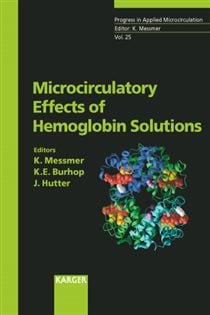Microcirculatory Effects of Hemoglobin Solutions
Microcirculatory Effects of Hemoglobin Solutions
Couldn't load pickup availability

ISBN
ISBN
9783805577199
Authors
Authors
K. Messmer
Copyright Number
Copyright Number
April 2004
Edition Number
Edition Number
File Size
File Size
3
Solutions of stroma-free hemoglobin have been investigated for their potential as blood replacement fluids for more than 70 years. Despite many attempts to overcome their unwanted side effects through chemical modification of the hemoglobin molecule, none of the potential solutions has been approved for clinical use in Europe or the United States. In recent years, the vasoconstrictive activity of hemoglobin in the plasma was identified as the pivotal problem of hemoglobin-based blood substitutes, compromising nutritional perfusion and thus impeding oxygen unloading at the site of the microcirculation. One of the prevailing assumptions is that the precapillary vasoconstriction and the ensuing tissue underperfusion is caused by the high affinity of free hemoglobin for nitric oxide. To resolve this problem, a number of recombinant techniques involving site-directed mutagenesis as well as several chemical approaches involving polymerization and pegylation have been developed. This volume summarizes the latest research on the effects of some of these new hemoglobin solutions on the microvasculature and tissue oxygenation. It is recommended reading for all those interested in finding alternatives for donor blood in transfusion medicine, including emergency specialists, anesthesiologists, surgeons, trauma surgeons and other clinicians who are frequently confronted with blood loss and the need for blood replacement.


